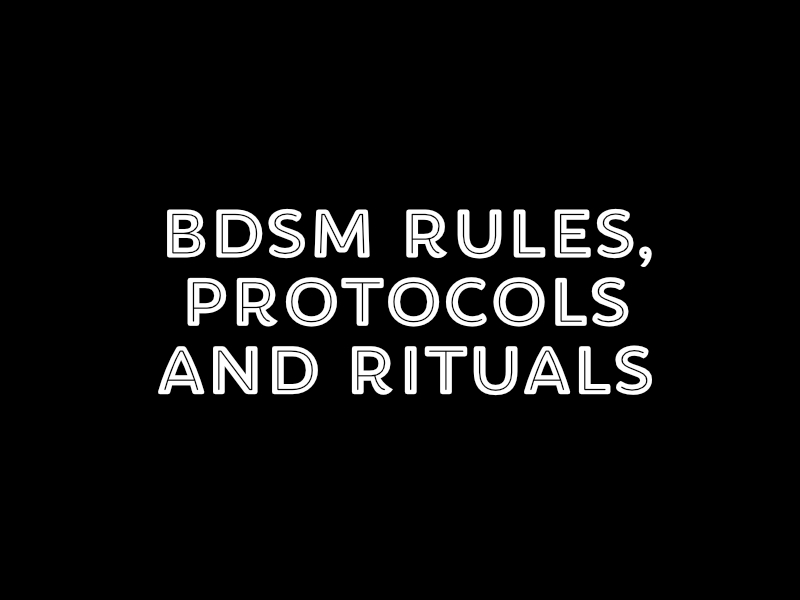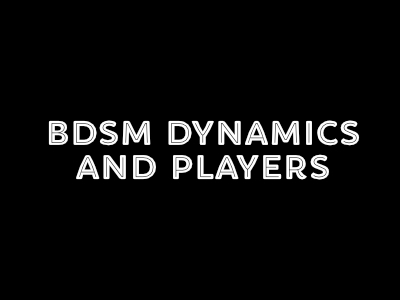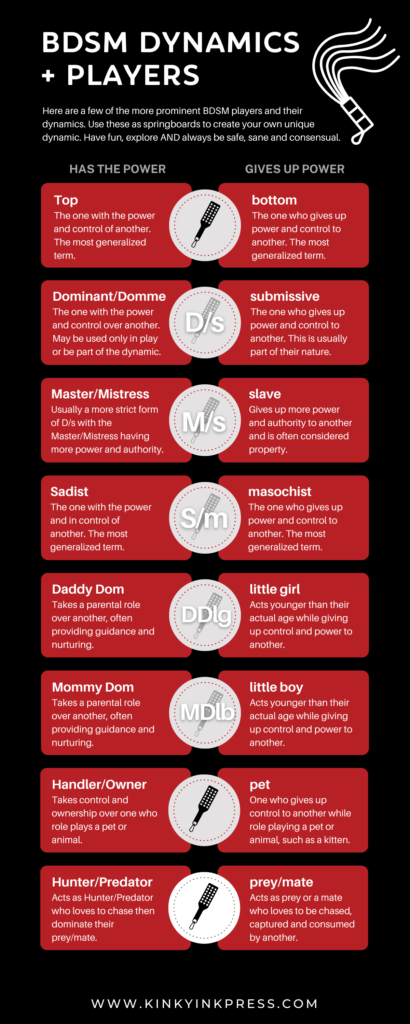Your cart is currently empty!

BDSM Protocols + Rules
BDSM PROTOCOLS
Most BDSM dynamics involve some sort of protocols, rituals and rules that create guidelines and structure for how both the top and bottom interact with each other within their dynamic. This structure, when done properly, can enhance and strengthen their dynamic while also helping to put both people into their perspective mindsets which heightens everything they do together. By creating a protocol or rule, something as simple as greeting someone when they arrive home, can turn into a delicious and heightened encounter.
With anything within a BDSM dynamic, protocols and rules need to discussed and mutually agreed upon before they’re implemented. Have a mindful discussion with your partner about your wants, needs and desires and determine which protocols and rules best suit your dynamic.
RULES
Rules, often found inside protocols, establish a specific way to do something. A rule is a simple and clear directive, such as being in bed by a certain time each night or always wearing some form of collar.
PROTOCOL
Protocol is a predetermined specific way of doing something, such as how you greet your partner when they arrive home from work. Protocols help lend formality and structure to the dynamic while putting both people in their respective mindsets within the dynamic. Generally, protocols are often enforceable by the top.
Depending on your unique dynamic and the surrounding circumstances, you need to determine which protocol levels work best for you. Many partners use different levels of protocols for different situations, such as having a high protocol when they’re home alone and having a low protocol while out in public. Every level of protocol includes a mindfulness and respect of the dynamic.
LOW PROTOCOL
Low protocol is the most casual level of protocol but it still includes rules and procedures for handling certain situations. Many times low protocol is used when in public situations where the higher protocols wouldn’t be appropriate or well received by others. These include subtle references to the dynamic that only those involved would understand without alerting others to their BDSM oriented dynamic.
Low protocol can include things such as wearing a statement necklace instead of a standard O-ring collar to keep things more discrete. The necklace still symbolizes the dynamic but in a much more subtle non-intrusive way.
MEDIUM PROTOCOL
Mosts dynamics will adopt medium protocols in their everyday lives that help to establish and strengthen the dynamic. An example of a medium protocol is addressing the top in a specific way, such as using the word Sir/Madam or Master/Mistress. These can also include specific behaviors that the bottom adopts around their top.
HIGH PROTOCOL
The most strict level of protocol, high protocols are generally reserved for kink events and/or when the partners are alone. These rules tend to be more restrictive and precise, enabling the bottom to yield even more deeply into their role in the dynamic. High protocols often include rules around speech, dress, conduct and how to serve the top.
Examples of high protocol include:
- the bottom always kneels in front of their top.
- the bottom must ask for permission to do certain things, such as leave a room or use the bathroom.
- the bottom must present themselves in a certain way to their top, such as kneeling.
- the bottom must not speak until spoken to by the top.
RITUALS
Rituals are repetitive actions performed in a specific way to illicit a specific mood or atmosphere. They’re less about specific rules and more about formalizing the power exchange dynamic. Rituals can also act to help put the bottom into a more submissive headspace and make wonderful transitions from normal everyday life to the dynamic life.
Rituals can include things such as:
- the bottom sending a morning text to the top every day.
- serving coffee/dinner/whatever in a very specific way.
- the bottom presenting their collar to the top every morning for the top to put on them.
- maintenance spanking/flogging/bondage.
FINAL THOUGHTS
Not all rules, protocols and rituals need to be implemented all at once. Take your time to incorporate them into your dynamic. Be open to making changes as needed. Ideally, schedule a regular time to check in with one another, such as once a week, while integrating new rules, protocols and rituals into the dynamic. Give each other feedback and discuss ways to further enhance the experiences. Ensure that both people feel safe and secure within the dynamic and within these new frameworks. Do what works best for the both of you and you will have a happy and healthy dynamic.
JOIN THE KINKY
VIP TRIBE!
Become part of the coolest tribe ever. Join now to save 25% off everything on my website and in my Etsy shop. You'll also have insider scoop of the latest products, access to unadvertised flash sales, free printables and exclusive giveaways. Opt out at any time. xo



 THE BDSM EMBLEM
THE BDSM EMBLEM
 FREE USE
FREE USE
 OWNED
OWNED
 UNOWNED
UNOWNED
 OWNER
OWNER

 TOP/bottom:
TOP/bottom: